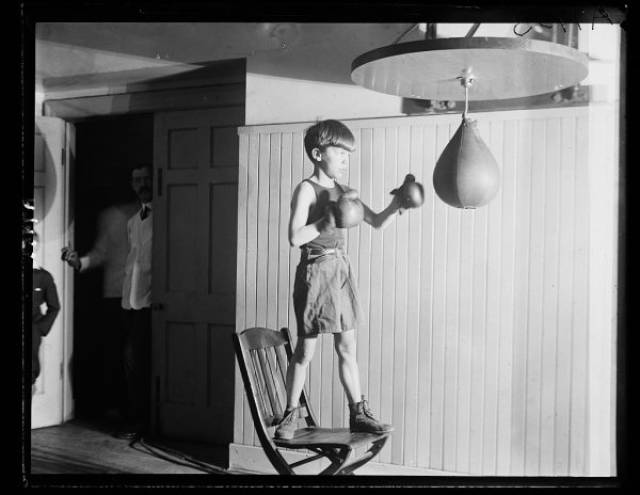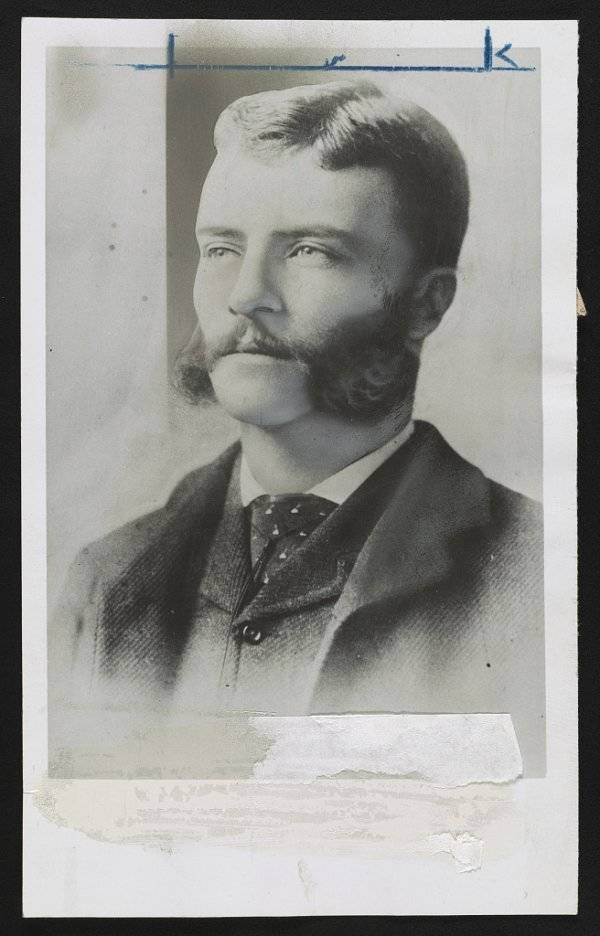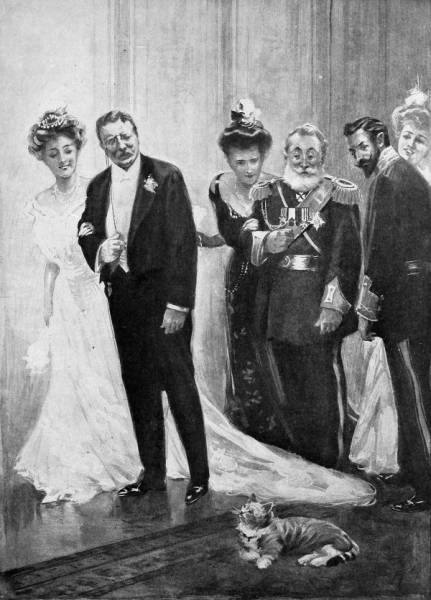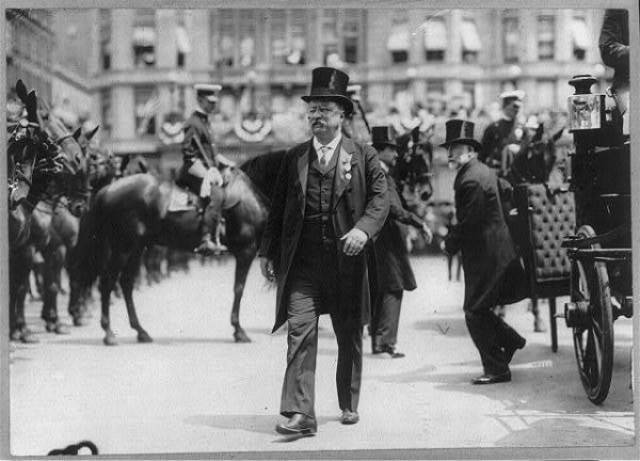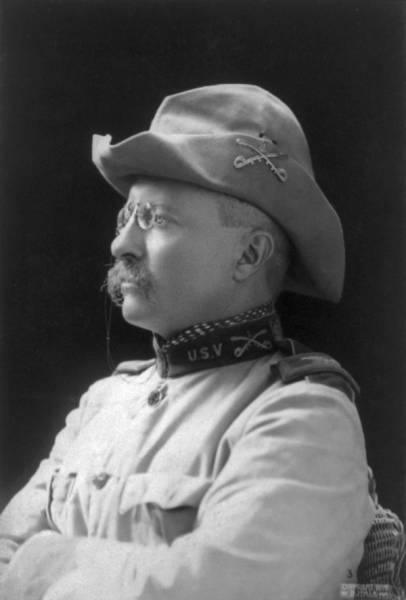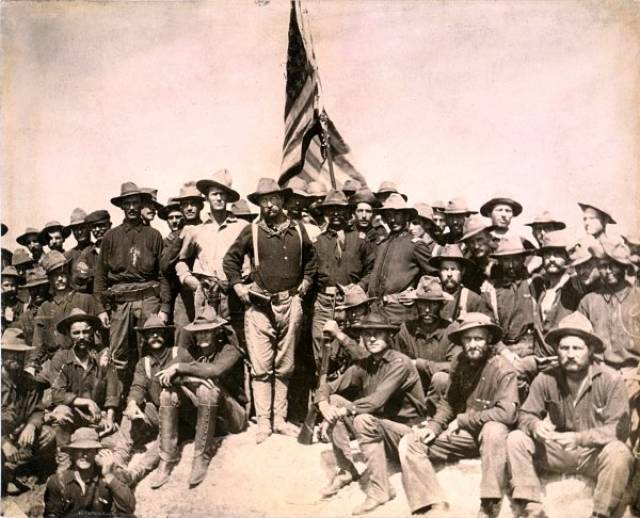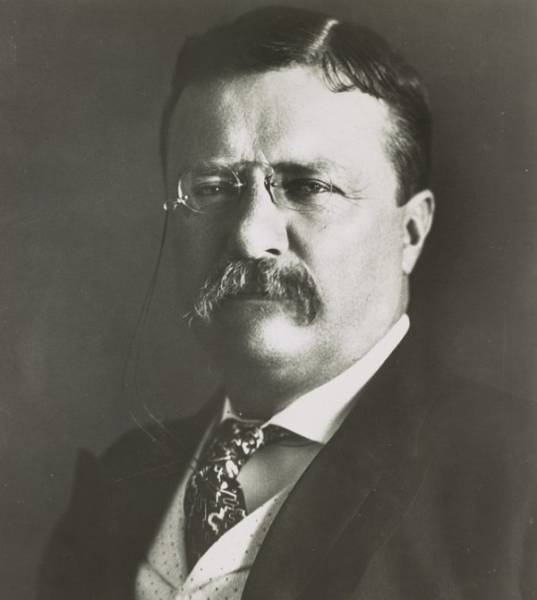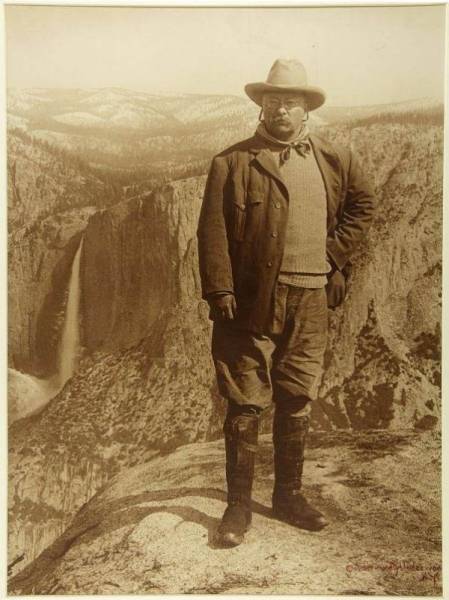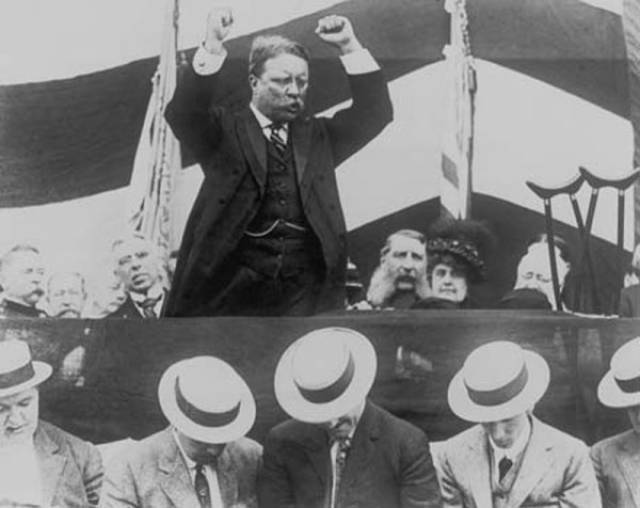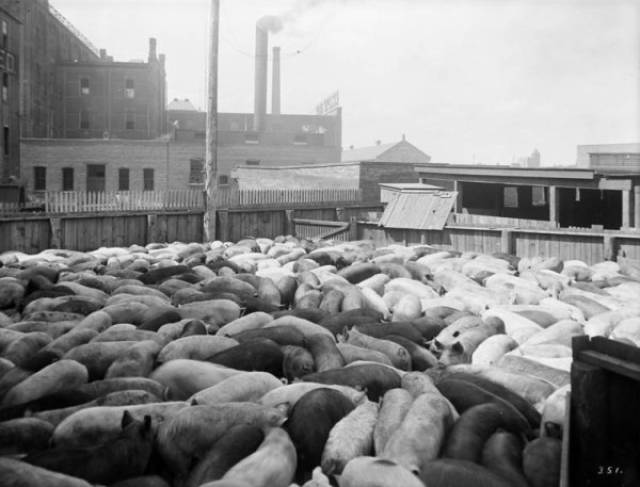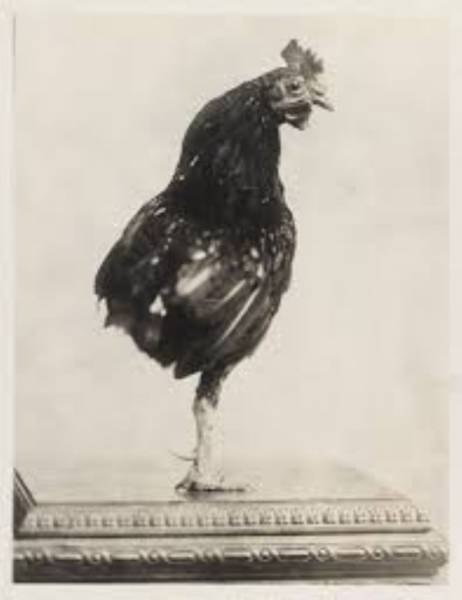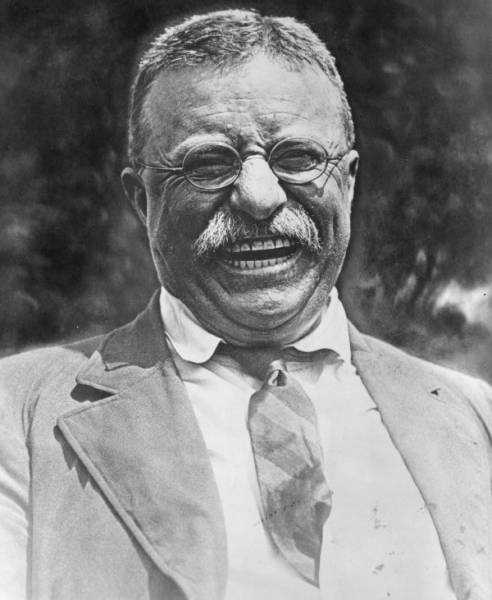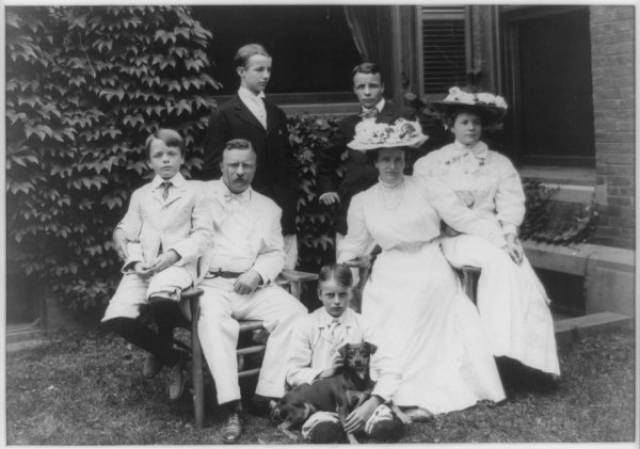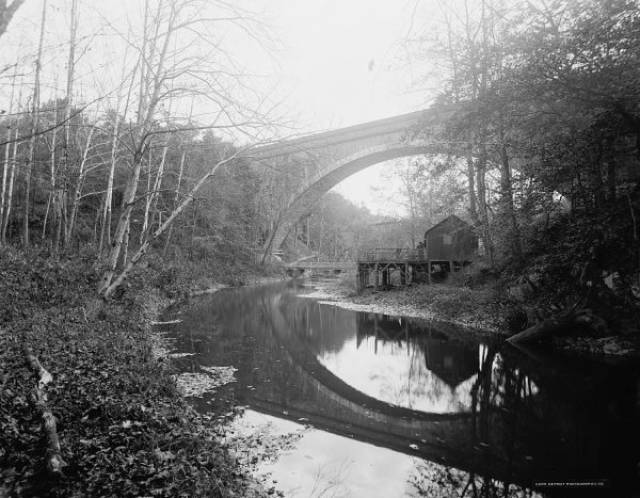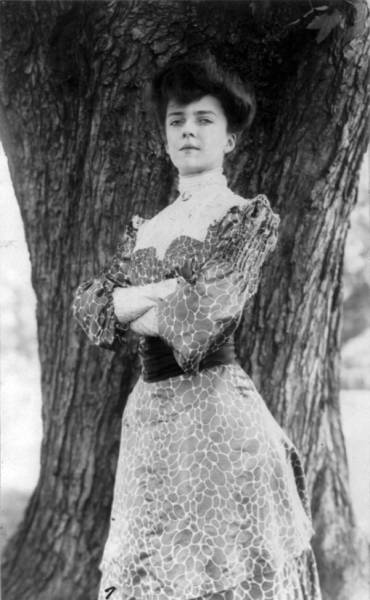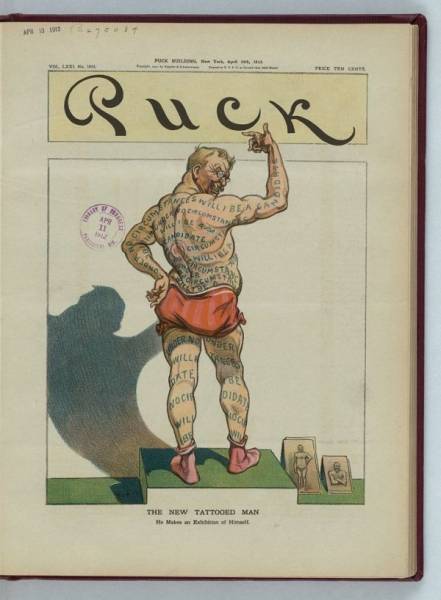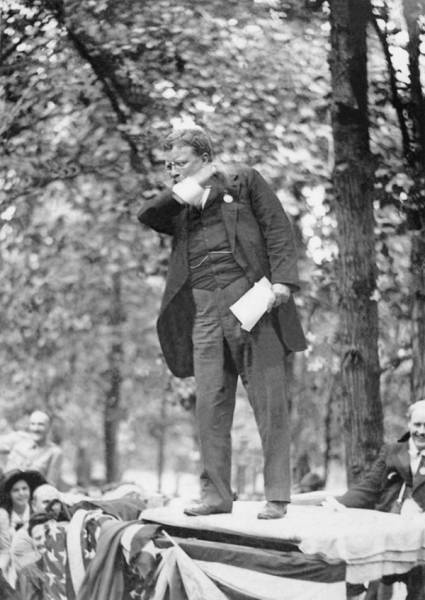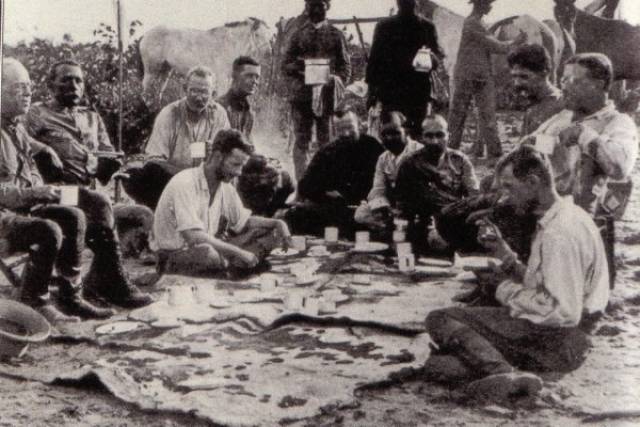Diary of a wimpy kid
Teddy grew up to be the spitting image of manliness, but as a child, he was quite the opposite. Often called “Teedie” by friends and family, he was a frail, bookish boy, prone to illness and a sufferer of asthma. He had a complete transformation when he discovered weightlifting and gymnastics, which eventually led to interests in judo and boxing. This transformation also made him a lifelong advocate for physical fitness.
He was a wild man in college
Teddy attended Harvard in 1876 at a time when students were mostly prim and proper. He was not. Known for shouting at people he knew from across the lawn and becoming aggressive during debates, Teddy still made lots of friends through sports and graduated 21st out of 161 students. It was there he met his first wife, Alice Lee, and on several occasions challenged men to duels if they dared approach her.
Cowboy lifestyle
He was a rancher for a time, hunting bison and opening a ranch in the Dakota Territory in 1883. He eventually expanded business to a second ranch, but his cowboy dreams came to an end due to overgrazing and bad weather, forcing him to sell his ranches in 1898.
His mother and first wife died almost simultaneously
On Valentine’s Day in 1884, Teddy’s mother died of typhoid fever. In the same house and only 12 hours later, his wife, Alice, died from Bright’s Disease and complications from childbirth after giving birth to their first child two days prior. Teddy wrote in his diary about the day, “The light has gone out in my life.”
He had a hands-on approach to fixing NYC police corruption
Teddy was appointed to Police Commissioner of New York City in 1895 at a time when it was wildly corrupt. He would often walk the streets himself to ensure officers were on their beats. He also held fast to his decision to ban the sale of alcohol in the city’s saloons on Sundays, despite receiving two letter bombs in the mail as retaliation.
He chased down thieves who stole his boat
When a group of armed thieves stole his boat and took it down the Little Missouri River, he and two ranch hands went on a three day chase in frigid weather. When the boat was on the riverbank, Teddy and Co. snuck up on the thieves and apprehended all of them. Fearing hogties would cut off the thieve’s circulation in the frozen temperatures, Teddy instead ordered them to remove their boots (an equally effective method in a wilderness covered in cactuses).
The Hero of San Juan Hill
Teddy became a deeply respected war hero during the Spanish-American War. Despite having important duties as New York City Police Commissioner and assistant secretary of the US navy, he insisted on serving the front lines when the war broke out. He led the First US Volunteer Cavalry — also known as the “Rough Riders” — and was involved in several skirmishes, suffering shrapnel injuries while storming the San Juan River in Cuba. During the Battle of San Juan Hill, he led a charge with the bare minimum of men required to hold off Spanish forces. After the war, stories of his heroics helped him become elected Governor of New York.
He’s the youngest president in US history
Teddy was Vice President to William KcKinley, but was sworn in as president following McKinley’s assassination in 1901. Teddy was 41 years old. The second youngest president was Kennedy, who was 43.
He was the first president to make big strides toward protecting the environment
Teddy protected over 200 million acres of land by dubbing them nature and wildlife refuges. Previous presidents combined had reserved less than a fifth of that. He also spoke of the importance of preserving America’s natural coal, iron, oil and gas resources, calling it a problem of his generation and not something to leave future generations to contend with.
He was an expert at schmoozing the press
Teddy was the first to establish the White House Press Conference Room, inviting journalists to come into the White House to hear updates and ask questions. He sometimes invited the press to interview him in less formal settings, for example, while he was getting a shave.
Publicity stuntman
Far from camera shy, Teddy also staged spectacular public demonstrations. He once toured the country 98 miles on horseback to prove new Army regulations were reasonable. Another time, he vouched for the development of a new submarine by diving it to the bottom of Long Island Sound.
He made meat safer for everyone
In what many call the most significant act of Teddy’s presidency, he managed to pass regulations on meat packing plants to ensure the cleanliness of their product. Health aside, the legislation marked a huge victory for the government in their power struggle with big business. With the media on his side (see 10), Teddy was able to expose the packing industry’s filthy conditions, despite much of congress being in the pockets of those industries. It ushered in the era of politicians attempting to “spin” the press in their favor.
He had a ridiculous collection of pets
No one in office has had more presidential pets than Teddy Roosevelt. His collection was essentially a zoo, including dogs, rabbits, horses, flying squirrels, chickens, bears, a lion, a zebra, a rat, several exotic birds stored in the White House greenhouse, a one-legged rooster, pigs, guinea pigs, a hyena, a wildcat, a coyote, a lizard, and a raccoon. One of his sons had a snake named Emily Spinach which had to be returned to the pet store after escaping in the White House and scaring a group of congressmen. Another son had a “friendly by nature” but “short-tempered” badger named Josiah, which he carried with him everywhere.
Boxing left him nearly blind in one eye
Roosevelt continued to pursue his love of boxing and judo throughout his presidency. In 1905, when Teddy was 50 years old, a blow to the eye resulted in a detached retina. After that, he says in his autobiography, he was “dim” in that eye.
He hated his presidential portrait so much he burned it
Teddy was not a fan of his presidential portrait, painted by Artist Théobald Chartran, claiming it made him look like a “mewing cat.” Even his family teased him about it. As one of his final acts before leaving the White House, Teddy burned the portrait.
He also hated the nickname “Teddy”
His first wife, Alice, always called him “Teddy” and the nickname stuck. Though he approved of toy stores selling “Teddy Bears” — a response to him refusing to shoot a wounded bear on a hunting trip — he preferred to be called Colonel Roosevelt. While on safari in Africa, his guides called him “Bwana Tumbo,” or “Mr. Unusually Large Belly.”
Always down for a skinny dip
Roosevelt was never shy about stripping down to his birthday suit and taking a swim. He even went skinny-dipping with the French Ambassador in the Potomac, though the ambassador left his gloves on “because we might meet ladies!”
His daughter was a rebellious teen
His eldest child, Alice, named for her mother, was 17 when Roosevelt took office and garnered a lot of attention for her rebellious antics. She would often smoke cigarettes on the roof of the White House and walked around with a large boa constrictor around her neck. She became a sort of celebrity, the media giving her the nickname “Alice Blue.” Teddy did not approve.
He had some serious ink
Roosevelt had a large tattoo of the Roosevelt family crest in the center of his chest.
He gave a speech immediately after getting shot
With blood pooling noticeably through his shirt and reading from a stack of papers with a bullet hole through them, Roosevelt announced to a crowd in Milwaukee in 1912 that there had just been an attempt on his life. He finished his 90-minute speech before finally allowing his aids to take him to a hospital.
A near-deadly Amazon adventure
A trip to the Amazon in 1913 almost cost Teddy his life. He set out on an expedition trekking along the largely uncharted “River of Doubt.” (I mean, it’s called the “River of Doubt”…. what could go wrong?) Half of the crew’s pack animals died of exhaustion. They were dangerously low on food. A bunch of them contracted tropical fevers — including Teddy himself, who was prepared to be left to die so as not to slow down the others. After a grueling two months, however, they eventually made it back to civilization.

